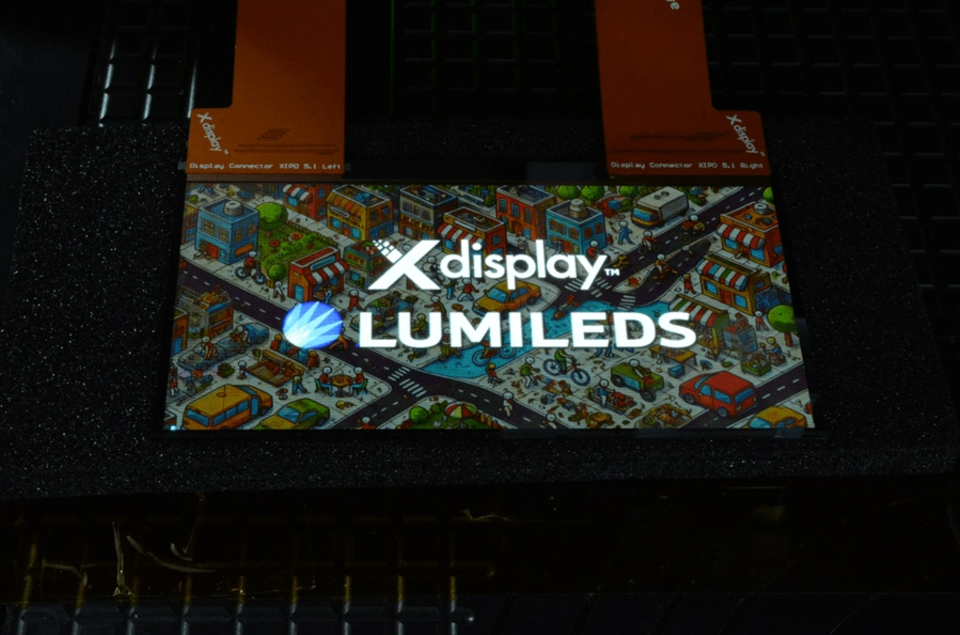With the continuous development of display technology, MicroLED display, as a next-generation display technology with great potential, is attracting more and more industry attention. With its advantages of high brightness, wide color gamut, high contrast and low power consumption, MicroLED technology has become an important direction for the future development of the display industry. Recently, XDC, a U.S.-based Micro Display Technology company, and Lumileds, a global leader in lighting and display technology, announced that they have made an important technological breakthrough in the field of MicroLED displays, launching innovative MicroIC driver technology. This collaboration marks a key step forward in the precision, efficiency, and range of applications of MicroLED display technology.
Ⅰ. Overview and advantages of MicroLED technology
MicroLED is a display technology based on self-emitting pixels, where each pixel is made up of tiny LED crystals and does not rely on a backlight. MicroLEDs offer several significant advantages over traditional liquid crystal (LCD) and organic light-emitting diode (OLED) technologies:
1. High brightness and high contrast: MicroLED displays can provide higher brightness and deeper blacks, which greatly improves the clarity and visual impact of the display.
2. Wider color gamut and richer colors: MicroLEDs outperform LCD and OLED, especially in terms of color saturation and accuracy.
3. Low power consumption: MicroLED screens are more energy efficient because each pixel unit is self-illuminating and does not require an external backlight, reducing power consumption.
4. Longer life and stability: Since MicroLED does not use organic materials, MicroLED displays are less prone to burn-in or attenuation than OLED, and have a longer service life.
These advantages make MicroLED have broad application prospects in high-end TVs, virtual reality (VR), augmented reality (AR), smart wearable devices and other fields. However, despite the significant advantages of microLED display technology, how to efficiently and stably drive millions or even billions of tiny LED pixels is still a key challenge in the development of the technology.
Ⅱ. the driving bottleneck of MicroLED display technology
One of the core technologies of MicroLED displays is how to precisely drive each tiny LED pixel. In large-scale displays, the number of pixels displayed is often in the millions or even hundreds of millions, and each LED pixel needs to be driven independently. Conventional drive methods face the following challenges:
1. High power consumption: Traditional drive circuits often require high power consumption when controlling a large number of pixels, which affects the energy efficiency of the display.
2. Low space utilization: As displays grow in size, traditional drive circuitry takes up more space, which limits the design and overall thickness of the display.
3. Thermal management issues: Dense drive circuitry can generate too much heat, affecting the stability and performance of the display.
Therefore, how to develop an efficient, stable, and low-power driver technology has become the key to the commercialization of MicroLED technology.

Figure: XDC and Lumileds achieve a breakthrough in the field of microLED display (Source: Lumiled)
Ⅲ. Driven by XDC and Lumileds’s MicroIC Technology
The collaboration between XDC and Lumileds addresses these issues with the introduction of innovative MicroIC driver technology. This new technology enables the use of higher efficiency and low power consumption to drive larger microLED displays with high efficiency and low power consumption by precisely controlling the current and brightness of each microLED pixel.
Specifically, the advantages of MicroIC driver technology include:
1. Reduced power consumption: New driver circuitry can significantly reduce battery consumption, especially for portable and wearable devices.
2. Improve display accuracy: Through refined current control, MicroIC technology can achieve more accurate brightness and color performance of each pixel, and improve the overall display effect.
3. Smaller space occupation: MicroIC driver technology makes the circuit design more compact, saves space inside the display, and provides the possibility of thinner and lighter display devices.
4. Thermal Management Optimization: MicroIC technology generates less heat than traditional driver circuits, helping to improve the stability and durability of the display.
This technological breakthrough not only improves the efficiency of MicroLED displays, but also effectively promotes the wide application of MicroLED display technology in consumer electronics, virtual reality, augmented reality and other fields.
Ⅳ. the application prospect of MicroLED display technology
As the cooperation between XDC and Lumileds progresses, the application of MicroLED display technology is becoming more and more promising. Here are a few possible areas of application:
1. High-end TVs: MicroLED displays will occupy an important position in the high-end TV market due to their excellent color performance, contrast and energy efficiency, providing a superior visual experience than OLED and LCD.
2. Virtual Reality vs. Augmented Reality: The high resolution and ultra-high contrast ratio of MicroLEDs make them ideal for display technology in VR and AR devices, enhancing immersion and detail.
3. Smart wearable devices: MicroLED displays can provide thinner and more energy-efficient display solutions, which are very suitable for applications such as smart watches and wearable fitness devices.
4. Automotive display system: With the advancement of automotive intelligence, the application of MicroLED technology in automotive displays will become a future trend, providing drivers and passengers with more refined display effects.
Ⅴ. Conclusion: The future of MicroLED technology
The technological breakthroughs of XDC and Lumileds have not only promoted the technological progress of MicroLED displays, but also provided new impetus for their commercial application. With the promotion of MicroIC driver technology, MicroLED displays will be widely used in many industries such as high-end consumer electronics and smart wearables.






